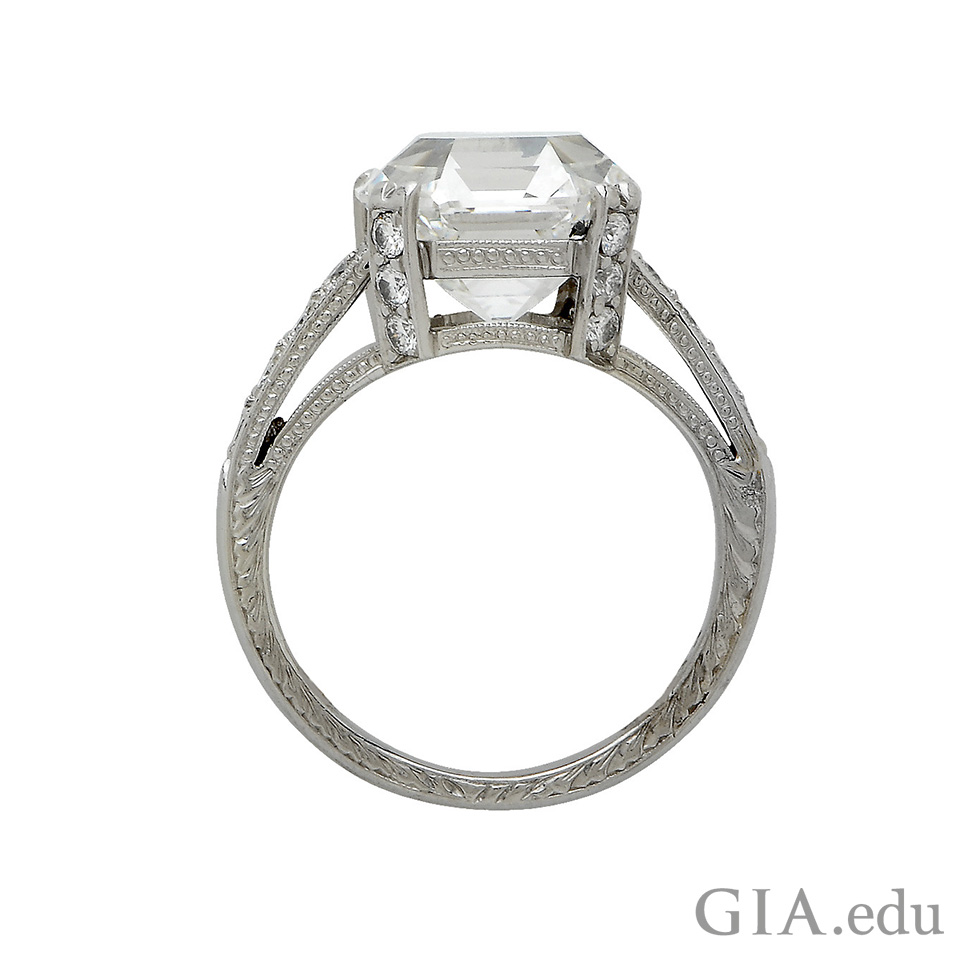If you’re asking, “What is the most important C?”, chances are you’re already well into the process of purchasing a diamond engagement ring. When it comes to diamond quality, the answer is simple, but not necessarily straightforward.
“Which is the most important of the 4Cs?” – well, it depends. It depends on your taste and budget, and what you and your partner deem most important. Like buying a car, a house, or anything else, your choices when buying a diamond will be determined by your budget. The goal is to get the best diamond quality you can afford. But there will be trade offs. Knowing your preferences is the first step in defining what’s most important to you, and where you’ll compromise. So, what are your diamond priorities?
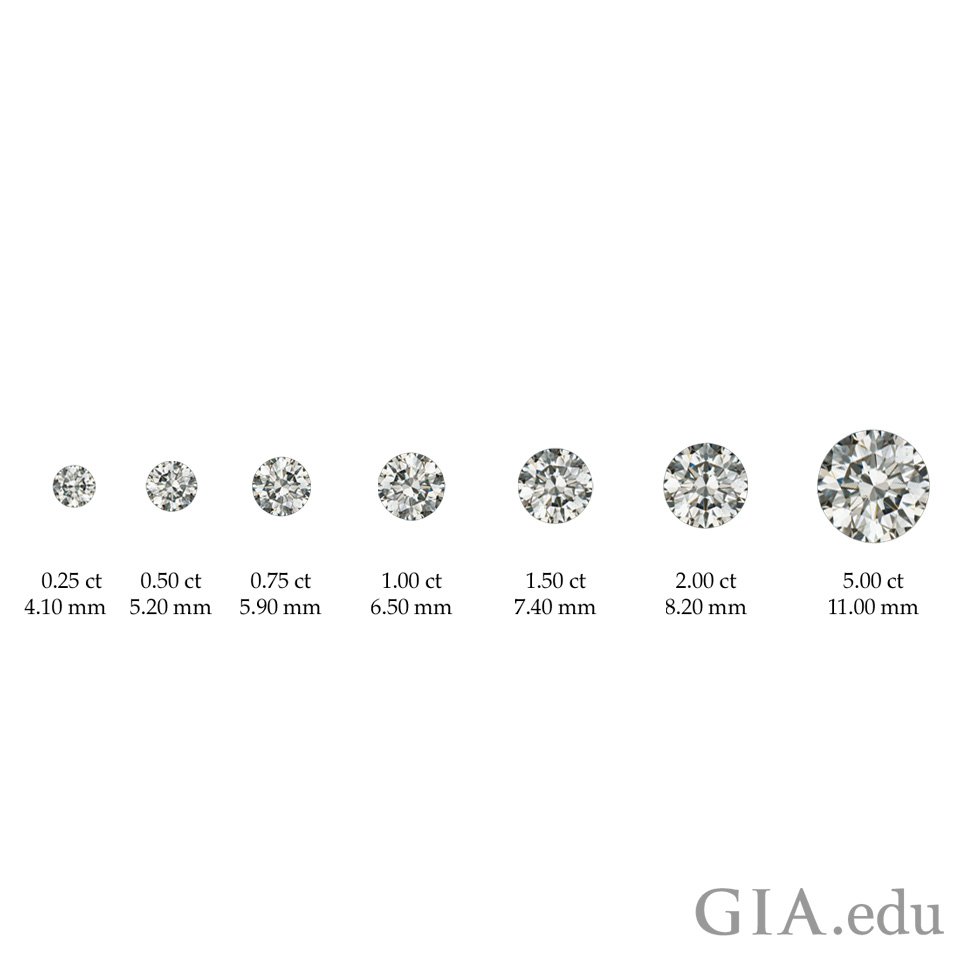
How do diamond sizes compare? This image shows the carat (ct) weight and average diameter for various round brilliant cut diamonds. Photo: GIA
Is Carat Weight the Most Important C?
Diamond size is measured in carat weight. Small differences in carat weight can sometimes mean price differences of hundreds—even thousands—of dollars, depending on the size and overall diamond quality.
If the appearance of size is important, you can create the illusion of size by picking the right diamond shape. Fancy shapes tend to look bigger for their carat weight, especially elongated shapes such as a ovals, rectangles, and marquise. An engagement ring with a narrow band and a bezel or halo setting can also accentuate a diamond’s size.
If size were the only thing that mattered, you could, theoretically, buy a five-carat diamond for a few dollars. Of course, it would not be gem quality. It would be so heavily included that you couldn’t see through it, and its color might be brown or gray. Its cut quality would be irrelevant, since light doesn’t pass through it at all. The diamond would certainly be big, but friends, family, and your fiancée might be hard pressed to recognize it as diamond.
That’s why it’s important to know that carat weight alone isn’t everything. Diamond quality is determined by a combination of all the 4Cs.
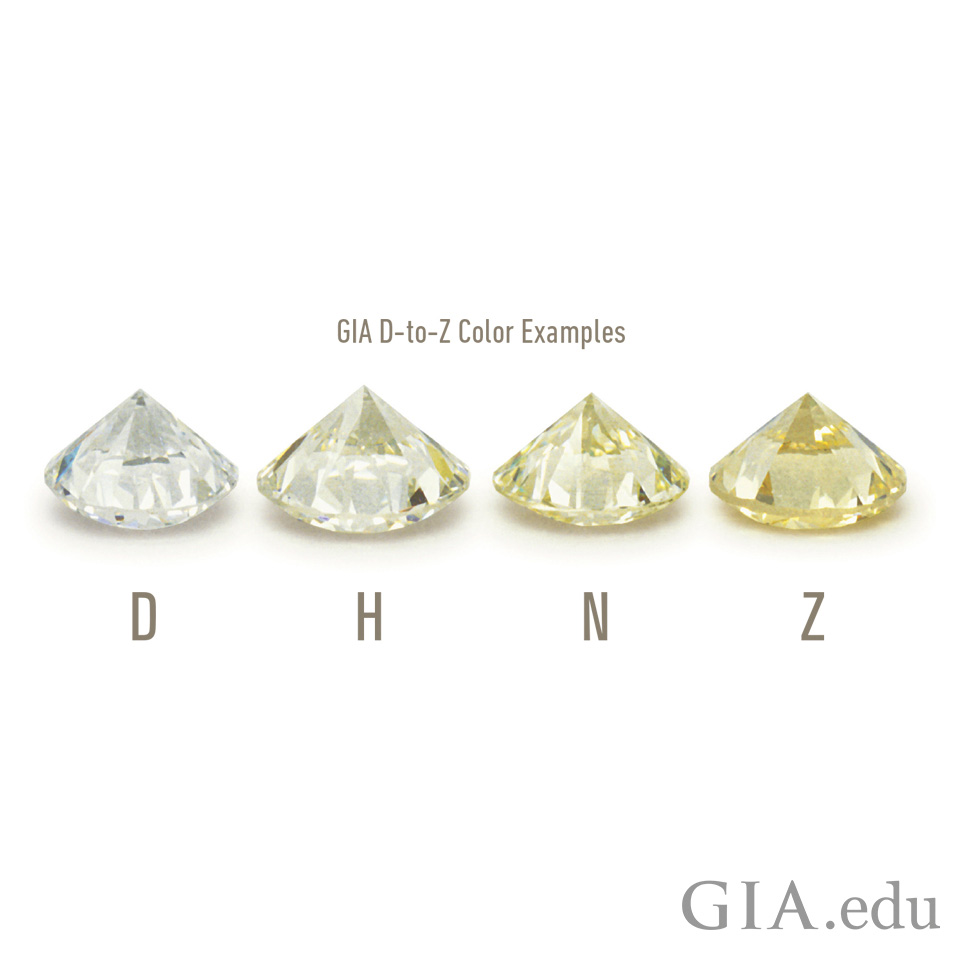
You might easily see the difference in color between the D-color and Z-color diamonds, which represent the extreme ends of the GIA Color Scale. But the color differences between H and N may not be so apparent to you. Photo: GIA
Is Diamond Color the Most Important C?
Subtle differences in diamond color can dramatically affect diamond value. Two diamonds of the same clarity, weight, shape and cutting style can differ in value based on color alone. Even the slightest hint of color can make a difference in what you may pay for the diamond.
GIA determines the degree of colorlessness in a diamond by comparing it under controlled lighting and viewing conditions to a set of masterstones of established color grades. The GIA D-to-Z diamond color grading scale, or diamond color chart, begins with the letter D, representing colorlessness, and continues with increasing presence of color to the letter Z, for light yellow, light brown or light gray. The 23 color grades on the GIA Color Scale are subdivided into five subcategories: colorless (D-F); near colorless (G-J); faint (K-M); very light (N-R); and light (S-Z). Each letter grade has a clearly defined narrow range of color appearance.
The more colorless the diamond, the more rare it is, which is why you’ll spend top dollar on a D-color diamond. Once set in a mounting and worn on a hand or dangling from an ear, it’s less likely that you can easily see the difference between a D and G color diamond.
As you shop, look at diamonds with different color grades. You might be surprised at the range of color that you find acceptable. You might find (as some do) that a diamond with a little color (J or K for example) has some warmth that you like.
Remember that a diamond is made up of tiny reflective surfaces, so its color appearance will be influenced by its surroundings. This includes natural and artificial light, the color of the clothing you’re wearing, and even the color of the metal in which the diamond is set. White metals, like platinum, can accentuate diamonds with higher color grades of H and better. At about J, K, or L, the contrast starts to become noticeable if the metal is very white (platinum). The slightly yellowish body color of diamonds with a lower color grade is less noticeable when they are set in yellow gold.
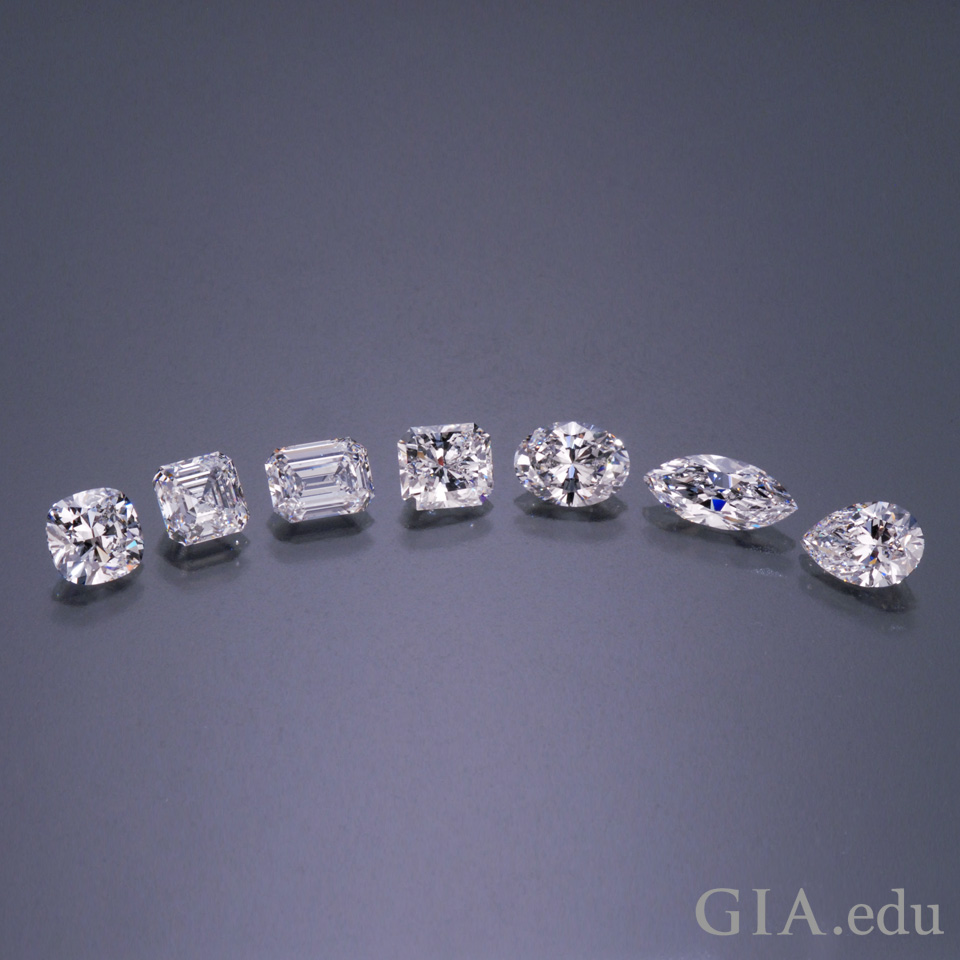
In this group, can you tell which diamond has the highest clarity grade and which one has the lowest? Without a 10× loupe and seen from a distance, a diamond’s overall clarity may be difficult to see. Answer: The 1.03 ct Asscher cut diamond (second from the left) has the highest clarity: VVS2. The 1.01 ct marquise shaped diamond (second from the right) has the lowest clarity: SI1. Photo: Robert Weldon/GIA
Is Diamond Clarity the Most Important C?
Flawless diamonds are so rare that it’s possible to spend a lifetime in the jewelry industry without ever seeing one. At the other end of the diamond clarity scale are diamonds with inclusions that can be easily seen by the unaided eye. Between the two extremes are diamonds with inclusions visible only under 10× magnification. Stones in this middle range make up the bulk of the retail market.
Do you wander through the day carrying a 10× jewelers’ loupe examining people’s diamonds? No one else does either.
The GIA Clarity Scale, or diamond clarity chart, has 11 clarity grades: Flawless (FL), Internally Flawless (IF), two categories of Very, Very Slightly Included (VVS), two categories of Very Slightly Included (VS), two categories of Slightly Included (SI), and three categories of Included (I). A diamond’s clarity grade is determined by the size, number, position, nature, and color or relief of any inclusions or blemishes.
A diamond with no inclusions visible under 10× magnification, is graded IF: the very rare end of the clarity scale and therefore the priciest. As you move down the scale, it’s unlikely you’ll see the very tiny inclusions of a VS2 or SI1 diamond. And unless examined closely, some people won’t even notice the inclusions of an I1 diamond.
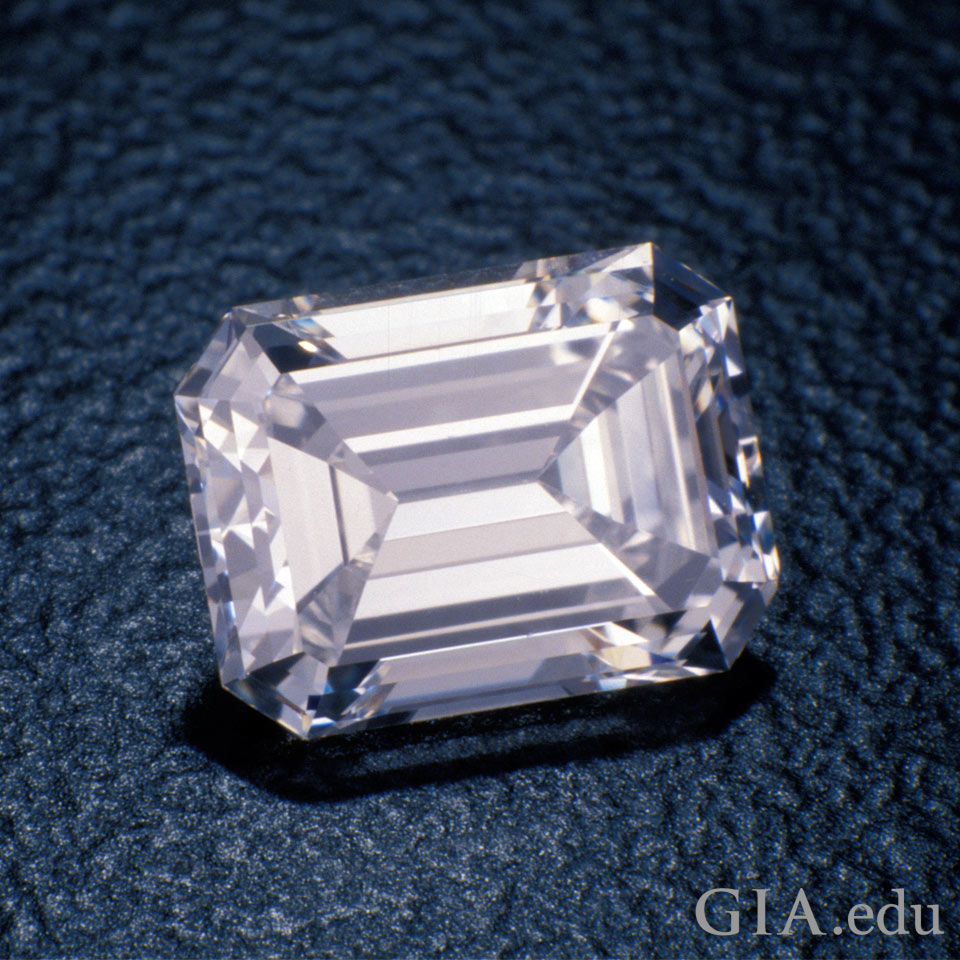
This 1.27 ct emerald cut diamond is F color with a clarity grade of VVS2. Photo: Robert Weldon/GIA. Courtesy: Brian Davenport
Look at diamonds with different clarity grades to narrow down your preferences. Note where surface reaching blemishes are located. If you have your heart set on an emerald cut diamond, you may want to consider the highest clarity grade you can afford, since the traditional step-cut faceting style tends to make inclusions more obvious in lower clarity diamonds.
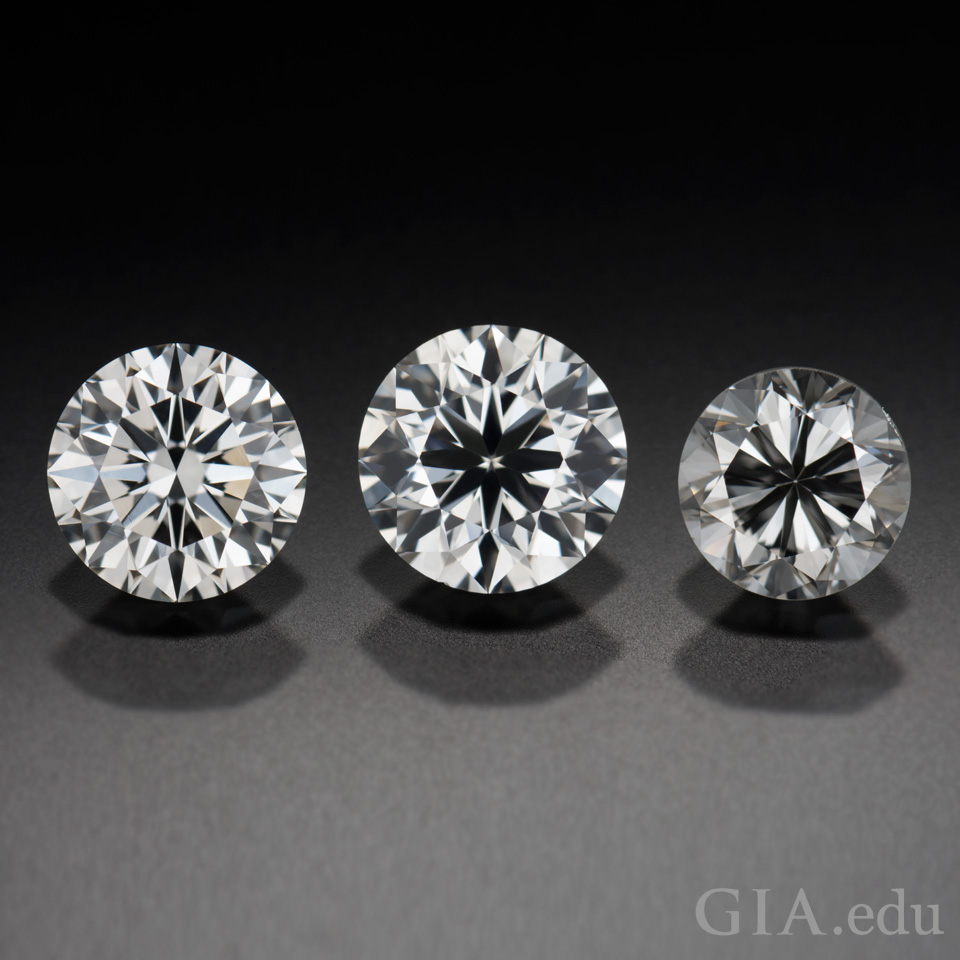
These round brilliant cut diamonds show how cut quality affects visual appearance. GIA cut grades, (left to right): Excellent, Good, Poor. Photo: Kevin Schumacher/GIA
Is Diamond Cut the Most Important C?
Every diamond quality factor matters to someone. If you’re looking for sparkle and those unmistakable flashes of color and light that telegraph “diamond” across a crowded room, then a diamond’s cut quality is very important.
This diamond quality factor refers to how skillfully the diamond was cut. A diamond’s cut grade represents a range of proportion sets and diamond appearances – all of which combine to deliver the magnificent return of light that’s only possible with a diamond.
GIA developed the cut grading system for standard round brilliant cut diamonds based on thousands of observations of actual diamonds by jewelers and consumers like you. While the GIA Cut Grading Scale contains five grades going from Excellent to Poor, it’s important to keep in mind that each grade represents a range. Diamonds with different face-up appearances may have the same cut grade. And because the grades were established by determining what most people preferred in each range, a given cut grade may not necessarily deliver the diamond that you prefer.
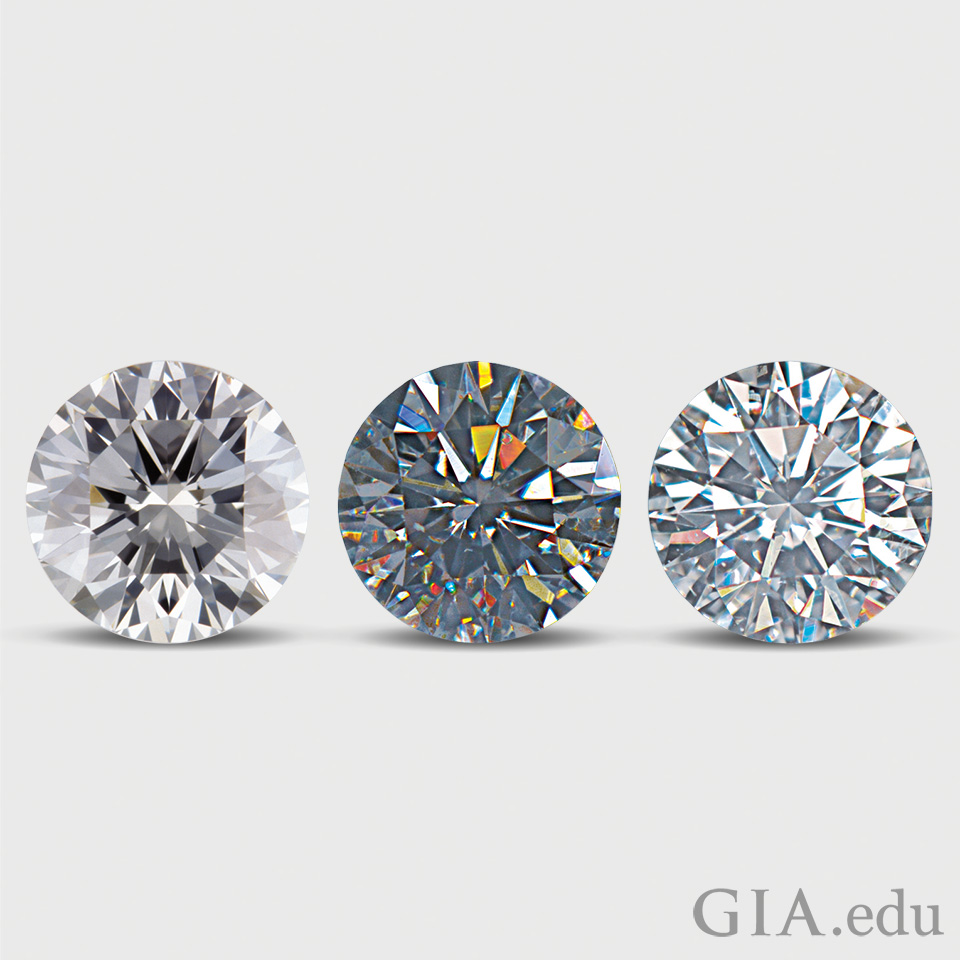
Lighting has a dramatic affect on a diamond’s appearance. Here is the same diamond under (left to right) diffused/fluorescent lighting, under incandescent or spot lighting, and a combination of spot and diffused lighting. Photo: Eric Welch/GIA
Take your time in finding your preference. As with color, a diamond’s highly reflective surface causes light to affect its face-up appearance. Look at diamonds in three different kinds of light:
- Diffused lighting: common in many offices, the overhead light source is generally white with no spots of bright light. You don’t see many flashes of color (fire) in the diamond under this type of lighting, but you can easily see a pattern of light and dark areas caused by reflections within the diamond (scintillation).
- Spot lighting: this is becoming more common as people adopt LED light sources and ubiquitous in jewelry stores. You will see lots of fire, obscuring the pattern you saw in diffused light. Direct sunlight, the most common lighting condition is a form of spot lighting—one single spot source. Make sure to view the diamond outside to make sure that it “performs” as you expect it to.
- Combination of spot and diffused lighting: you should still see the pattern in the diamond easily, with the addition of fire. This environment is often the most pleasing overall.
As with color and clarity, the higher the cut grade, the more expensive the diamond when all other factors are the same.
And the Most Important C of All Is…
Now that you’ve taken the time to figure out your diamond priorities, there’s one more factor to consider: cleanliness. A diamond is like a collection of tiny mirrors reflecting light and its surroundings. Its color, clarity, and cut will matter little if the diamond is dirty. You will need to keep your diamond clean (free from oil and dirt) if you want it to sparkle as much as it did when you first saw it.
Ready to start looking at diamonds? Before you head into a jewelry store, brush up on the lingo with this guide to common engagement ring terms and make your shopping a little easier.
Custom Field: Array
